Home >> Diversity and classification >> True fungi >> Dikarya >> Basidiomycota >> Agaricomycotina >> Gasteromycetes >> Stinkhorns
STINKHORNS
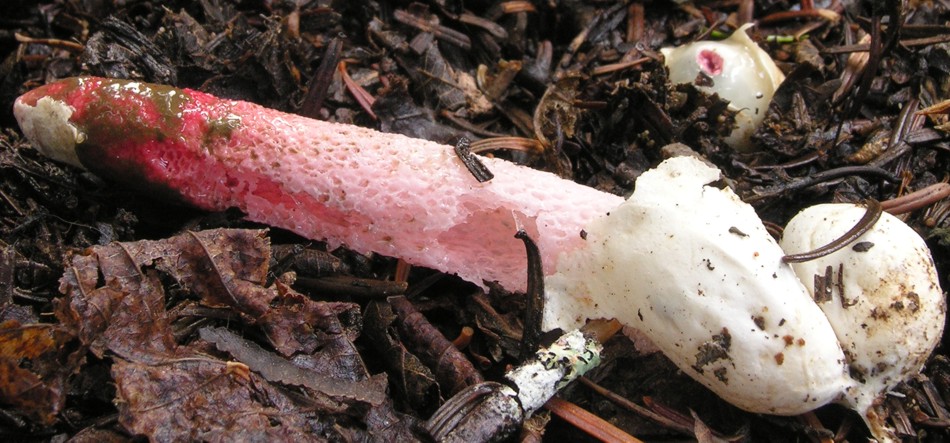
The picture above illustrates the species Mutinus caninus, the dog stinkhorn, removed from the ground and lain on its side. Several things about stinkhorns are evident in this picture. As in all stinkhorns the basidiomata M. caninus begin as soft egg-shaped structures with a complex inner anatomy. One such "egg" can be seen in the picture near the base of the expanded basidioma. At maturity a spongy inner layer expands upward to form a long column, bearing at its apex a slimy greenish mass of basidiospores. The basidiospore mass has a strong odour, unpleasant to humans but attractive to insects, especially flies, that visit it and eat them. The basidioma in the picture still has some of the spore mass at its apex as well as a white piece of the egg that remained attached to it as it expanded. In the upper right part of the picture is an unexpanded egg, still in the ground but showing the tip of the incipient stalk. You may also have noticed that the stalk of the large one has been damaged. This is due to the voracious appitite of our New Brunswick slugs.
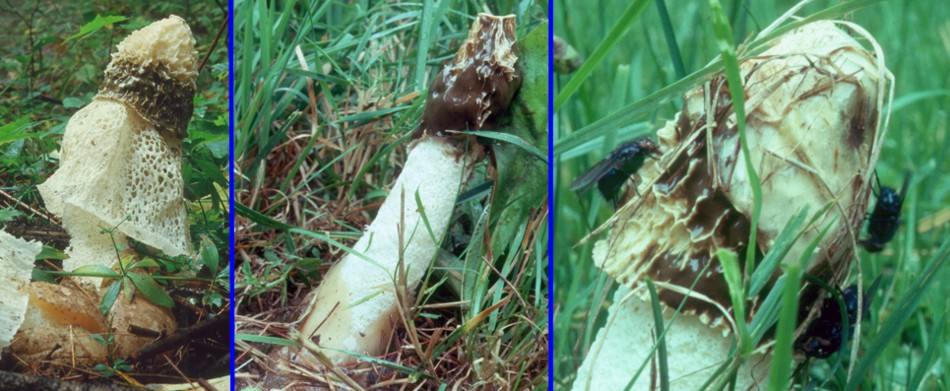
Probably the most familiar stinkhorns to most people are those of the genera Dictyophora and Phallus. In our region D. duplicata, left panel, is the most spectacular. The spore-bearing part of its large basidiomata bears at its base a long net-like skirt. Above that the pileus has a network of ridges covered by the strong-smelling mass of spores. Phallus impudicus in the middle panel is similar to D. duplicata except that it lacks the skirt. Its spore mass is also strongly attractive to insects, especially large flies like the ones in the right panel, that walk around mopping up the spores until it is completely clean. Amazing as it may seem these large stinkhorns are eaten in parts of Asia. Bags containing the dried expanded basidiomata can be purchased in Chinese grocery stores. Although the spores have been cleaned off some of the stinkhorn odour remains.
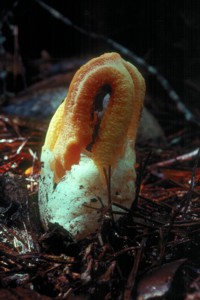
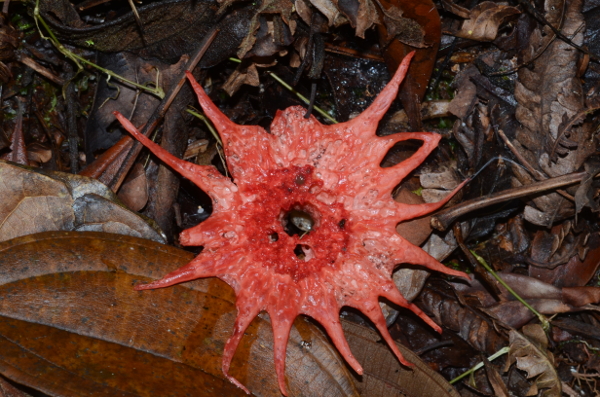
Stinkhorns can have a variety of shapes different from those discussed so far. For example Clathrus columnatus, figured at far left, does not develop a single stalk but instead produces a multi-arch structure. The basidiospores are produced inside the arches so that the insects have to crawl inside to get them. The odour is similar to that of other stinkhorns. This specimen was collected on a professional foray in Florida and carried back to headquarters in a crowded schoolbus without air conditioning. Of course all the mycologists were familiar with the odour and wondered aloud who had brought it aboard the bus, but the collector remained silent and unrepentant. The right panel is a photograph of Aseroe rubra, a peculiar starfish-like stinkhorn common in tropical regions.
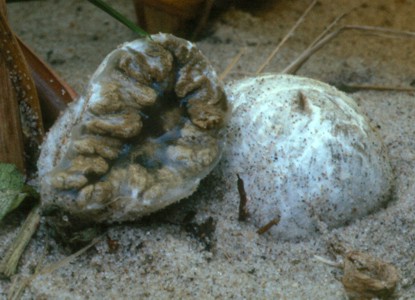
The genus Protubera represents another interesting variation on the stinkhorn theme. These fungi, such as P. sabulonensis at left, produce typical eggs filled with the usual gelatinous material but differ from other stinkhorns in that they do not produce an expanded stalk. These fungi simply crack open when they are mature to reveal the spore mass within. Another difference is that they don't have the usual bad (to humans) smell but instead produce an odour of overripe fruit. The first species of Protubera ever found was named P. maracuja after the Brazilian maracujá or passion fruit which has a similar odour. The one in the picture was collected on Sable Island, Nova Scotia, where it was growing in sand among dune grasses.